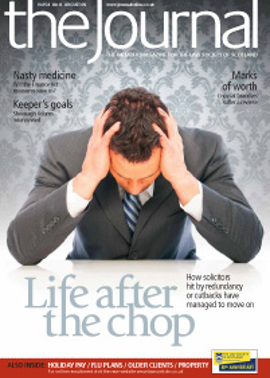Book reviews
While you are hard at work, a group of under-16s break into your home and do unspeakable things. Do you (a) want them locked up and the key thrown away; (b) want their welfare to be the principal concern when they are dealt with; or (c) shrug your shoulders and get on with filling out your insurance claim?
The competing reactions to children who carry out what in an adult would be a crime, and society’s response, is the subject matter of this rather fine book.
Starting with a scrutiny of the media frenzy during the Jamie Bulger murder case in 1993, the author sets the scene for her examination of this difficult area of legal and social policy. She provides chapters on children and the mental element in criminal law; recognition of the child’s criminal capacity; the historical treatment of children in Scots law (a chapter I found particularly interesting); the modern law; and justice within welfare.
From the practitioner’s point of view the book probably does not add much to existing texts which explain the system we have or the law itself. A textbook is not what the author has set out to achieve. However, her careful legal analysis when required (e.g. HM Advocate v S in the chapter on the modern law) would benefit any practitioner in understanding the issues raised in the cases looked at. While some of the sociological language might deter the more black-letter types amongst us, perseverance will have its benefits. The references to international treaties and conventions are very worthwhile and a good pointer for one not too well versed in them, such as me.
With the age of criminal responsibility now very much on the political agenda, this well set out, sensible and responsible contribution is all the more timely. What the author does so well is recognise that children are not like adults, but when dealing with them when they behave badly, the system must command the respect and confidence of the public. Not an easy balancing act, and one that sometimes goes unperformed by both radical and reactionary when addressing this issue.
This is a good, readable and very interesting book which aids the understanding of where we are and will inform your opinion of where we might go.
John Keir, Senior Procurator Fiscal Depute, Kirkcaldy. Any view or opinion expressed is mine alone and is not representative of COPFS.S
Enforcing Intellectual Property Rights
Jane Lambert
PUBLISHER: GOWER PUBLISHING
ISBN: 0 566 08714 1
PRICE: £45
Jane Lambert is an experienced intellectual property advocate for those involved in the commercial creative and innovative process.
That there is an entertaining side to this work is suggested by the opening chapter, which contains a fictionalised client conference. Amusing in presentation, this may
do much to attract the intended audience to the more formal chapters to follow. In fact, sections of it could provide a useful introduction within those chapters.
The book sets out to provide a “first aid” manual for enforcing IP rights, aimed at small businesses, innovators and creators, and start-up enterprises. It is stated not to be intended for the lawyer or law student, though the latter might well learn a good deal, given the extensive footnotes. Each chapter is designed to be read independently – a self-help manual in time of need. Nevertheless, the book guides the small entrepreneur or creator through the process of business planning for enforcement, and litigation, but also towards sensible and rational alternatives.
Further, it does a great deal towards demystifying the legal and intellectual property professions and their procedures. The advice is robust, pragmatic and sound. With the expense and time-consuming nature of litigation squarely in mind, the book aims to cover preventative measures, realistic decision making when faced with competition or a claim, and the choices for means of redress. More reference to IP audits and in particular the UK IPO’s “Healthcheck tool” would be beneficial. It should be noted that while the different Scottish and English court structures are detailed, the chapters on court proceedings refer to those in England & Wales alone.
Chapters cover intellectual property rights, options for dispute resolution, the Woolf Rules, deciding to take action, commencing proceedings, preparing the case, the hearing, sources of help, threats and actions.
A distillation of the most salient points a business should consider from the outset is perhaps the clearest and most useful chapter of all. The glossary of terms should prove useful; so too the specimen letters and particulars of claim. A further useful addition would be a list of the many useful websites referenced within the text.
While undoubtedly a useful text for its intended audience, it might be considered expensive in hardback format. So too, a layout more reminiscent of business texts, including frequent brief summaries of chief points, would serve its audience well, as there is much of the formal legal text in its current format. This does nothing to detract from the soundness of the advice.
In this issue
- Planning's big day
- Hair alcohol tests: tackling the root of the problem
- Ask not...
- Trainee recruitment must be more open
- Honest talking
- Out, but not down
- A budget to save the world?
- Uncertain rights
- Copycats: nine lives used up?
- A break from illness?
- On the record
- From the Brussels Office
- Member support: the next level
- Legal practice reinvented
- Beat the pandemic
- Ask Ash
- A vintage problem?
- Final is still final
- Blacklisting blacklists
- A better fitting kilt
- Proper restraint
- Scottish Solicitors' Discipline Tribunal
- Website review
- Book reviews
- Knowledge rules OK?
- Lifting the stones
- Legitimate finding or mortgage fraud?
- Islamic finance: a Scottish lead?
- Environmental Law Centre: taking issues






